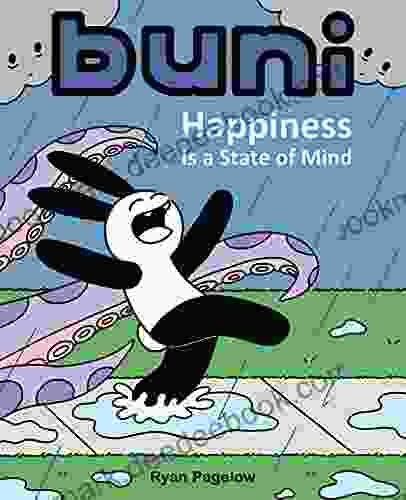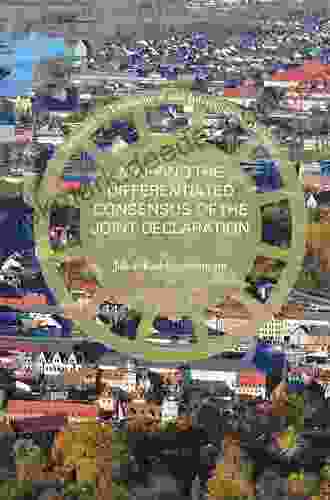Mapping the Differentiated Consensus of the Joint Declaration Pathways for a Collaborative Global Response to Climate Change

The adoption of the Joint Declaration Pathways for a Collaborative Global Response to Climate Change at COP26 marked a significant milestone in the global effort to address climate change. The declaration represents a differentiated consensus among the parties involved, reflecting the varying circumstances and capabilities of different countries. This article aims to map the differentiated consensus of the Joint Declaration Pathways, considering the different perspectives and interests of the parties involved and exploring the implications for the implementation of the Paris Agreement.
The Paris Agreement, adopted in 2015, established a long-term goal of limiting global temperature rise to well below 2 degrees Celsius above pre-industrial levels, with efforts to limit the increase to 1.5 degrees Celsius. The agreement recognized the principle of common but differentiated responsibilities and respective capabilities (CBDR-RC),acknowledging that countries have different historical responsibilities for climate change and varying capacities to respond.
In the lead-up to COP26, there were significant discussions and negotiations around the issue of differentiation. Developing countries argued for a more explicit recognition of their special circumstances and the need for support from developed countries. Developed countries, on the other hand, emphasized the importance of all countries taking ambitious climate action.
5 out of 5
| Language | : | English |
| Item Weight | : | 4.6 ounces |
| File size | : | 1876 KB |
| Text-to-Speech | : | Enabled |
| Enhanced typesetting | : | Enabled |
| Print length | : | 294 pages |
| Screen Reader | : | Supported |
The Joint Declaration Pathways for a Collaborative Global Response to Climate Change was adopted by consensus at COP26. The declaration outlines four key pathways for collaboration:
- Accelerating the transition to clean energy: This pathway focuses on promoting the deployment of renewable energy, energy efficiency, and sustainable transport solutions.
- Protecting and restoring nature and land-based ecosystems: This pathway aims to protect and restore forests, wetlands, and other ecosystems that play a vital role in carbon sequestration and climate mitigation.
- Promoting sustainable agriculture and food systems: This pathway seeks to transform agriculture and food systems to reduce emissions, increase resilience, and ensure food security.
- Mobilizing finance and investment: This pathway emphasizes the need to mobilize climate finance from both public and private sources to support the implementation of climate action.
The Joint Declaration Pathways reflect a differentiated consensus among the parties involved. This differentiation is evident in the language of the declaration, which recognizes the different circumstances and capabilities of countries. For example, the declaration acknowledges the need for developed countries to provide financial and technological support to developing countries. It also recognizes the importance of considering the special circumstances of vulnerable countries, such as small island developing states and least developed countries.
The differentiated consensus in the Joint Declaration Pathways is a reflection of the ongoing negotiations and discussions around the issue of differentiation under the UNFCCC. Developing countries have consistently argued for a more explicit recognition of their special circumstances and the need for support from developed countries. Developed countries, on the other hand, have emphasized the importance of all countries taking ambitious climate action. The Joint Declaration Pathways represent a compromise that allows both developed and developing countries to move forward with a collaborative global response to climate change.
The differentiated consensus in the Joint Declaration Pathways has implications for the implementation of the Paris Agreement. The recognition of different circumstances and capabilities among countries means that the implementation of the agreement will need to be tailored to the specific needs and priorities of each country. For example, developed countries will need to provide financial and technological support to developing countries to enable them to implement ambitious climate action. Developing countries, on the other hand, will need to take ownership of their climate mitigation and adaptation efforts and ensure that these efforts are aligned with their national development priorities.
The differentiated consensus also means that the monitoring and evaluation of the implementation of the Paris Agreement will need to take into account the different circumstances and capabilities of countries. Developed countries will need to be held accountable for their commitments to provide financial and technological support. Developing countries, on the other hand, will need to be held accountable for their commitments to take ambitious climate action and ensure that these efforts are aligned with their national development priorities.
The Joint Declaration Pathways for a Collaborative Global Response to Climate Change adopted at COP26 represent a significant milestone in the global effort to address climate change. The declaration reflects a differentiated consensus among the parties involved, acknowledging the different circumstances and capabilities of countries. This differentiation has implications for the implementation of the Paris Agreement, necessitating tailored approaches to climate action and monitoring and evaluation mechanisms that take into account the varying needs and priorities of countries.
As the world moves forward with the implementation of the Paris Agreement, it is essential to ensure that the principle of CBDR-RC is fully respected and that the differentiated consensus reflected in the Joint Declaration Pathways is translated into meaningful action on the ground. This will require a collective effort from all parties involved, including developed countries, developing countries, and civil society organizations, to work together to build a more sustainable and resilient future for all.
5 out of 5
| Language | : | English |
| Item Weight | : | 4.6 ounces |
| File size | : | 1876 KB |
| Text-to-Speech | : | Enabled |
| Enhanced typesetting | : | Enabled |
| Print length | : | 294 pages |
| Screen Reader | : | Supported |
Do you want to contribute by writing guest posts on this blog?
Please contact us and send us a resume of previous articles that you have written.
 Book
Book Page
Page Chapter
Chapter Text
Text Story
Story Library
Library E-book
E-book Magazine
Magazine Sentence
Sentence Bookmark
Bookmark Glossary
Glossary Bibliography
Bibliography Synopsis
Synopsis Footnote
Footnote Manuscript
Manuscript Scroll
Scroll Tome
Tome Bestseller
Bestseller Classics
Classics Library card
Library card Narrative
Narrative Autobiography
Autobiography Thesaurus
Thesaurus Narrator
Narrator Character
Character Librarian
Librarian Catalog
Catalog Card Catalog
Card Catalog Periodicals
Periodicals Scholarly
Scholarly Reserve
Reserve Academic
Academic Rare Books
Rare Books Interlibrary
Interlibrary Literacy
Literacy Study Group
Study Group Thesis
Thesis Storytelling
Storytelling Reading List
Reading List Book Club
Book Club Laura Mcwilliams
Laura Mcwilliams Anthony Celso
Anthony Celso Denise Graziano
Denise Graziano Ian Curtis
Ian Curtis Robert B Camp
Robert B Camp Nicki Night
Nicki Night Zara Stoneley
Zara Stoneley Richard G Lewis
Richard G Lewis Jason Cj
Jason Cj Hinnah Mian
Hinnah Mian David Corn
David Corn Nancy Parent
Nancy Parent William G Mayer
William G Mayer Miyamoto Musashi
Miyamoto Musashi Liz Shoaf
Liz Shoaf Anonym
Anonym Stephanie Baudet
Stephanie Baudet Milton C Toby
Milton C Toby Michael B Horn
Michael B Horn Stan Huskey
Stan Huskey
Light bulbAdvertise smarter! Our strategic ad space ensures maximum exposure. Reserve your spot today!

 Clark CampbellA Comprehensive Guide for Aspiring DJs: Unlocking the Essentials of the Craft
Clark CampbellA Comprehensive Guide for Aspiring DJs: Unlocking the Essentials of the Craft
 Ken SimmonsHistorical Reflections, Current Challenges, and Future Prospects: Routledge...
Ken SimmonsHistorical Reflections, Current Challenges, and Future Prospects: Routledge... John UpdikeFollow ·2.5k
John UpdikeFollow ·2.5k Eric NelsonFollow ·5.5k
Eric NelsonFollow ·5.5k Eliot FosterFollow ·15.5k
Eliot FosterFollow ·15.5k Eugene PowellFollow ·12k
Eugene PowellFollow ·12k Tyrone PowellFollow ·11.6k
Tyrone PowellFollow ·11.6k Herman MitchellFollow ·8.6k
Herman MitchellFollow ·8.6k William ShakespeareFollow ·5.5k
William ShakespeareFollow ·5.5k Cortez ReedFollow ·11.7k
Cortez ReedFollow ·11.7k

 Oscar Wilde
Oscar WildeDon't Stop Thinking About the Music: Exploring the Power...
Music is an...

 Floyd Richardson
Floyd RichardsonSnowman Story Problems Math With Santa And Friends
It's a cold winter day, and...

 W. Somerset Maugham
W. Somerset MaughamWhat Every Classroom Teacher Needs To Know: A...
Teaching is a challenging...

 Edgar Cox
Edgar CoxTall Tales But True: A Lifetime of Motorcycling...
I've been riding motorcycles for over 50...

 Chinua Achebe
Chinua AchebeBuni: Happiness Is a State of Mind
Buni is a beautiful...

 Herman Melville
Herman MelvilleThe Arts and Crafts of Older Spain: Embodying the Essence...
In the heart of the Iberian...
5 out of 5
| Language | : | English |
| Item Weight | : | 4.6 ounces |
| File size | : | 1876 KB |
| Text-to-Speech | : | Enabled |
| Enhanced typesetting | : | Enabled |
| Print length | : | 294 pages |
| Screen Reader | : | Supported |








